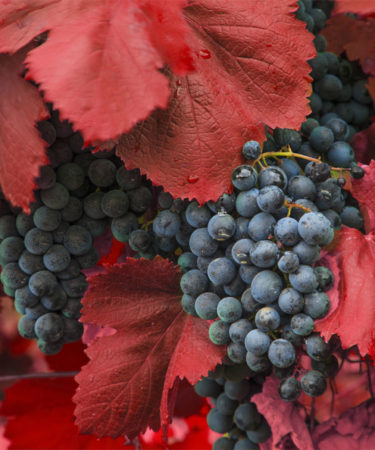A humble grape with humble ambitions, Trollinger is traditionally consumed as a fruity, regional specialty wine, often in the year of harvest. If this sounds familiar, that’s because the story of Gamay has a similar plot line — once considered a regional blight, Gamay became a modern darling as drinkers chased light, bright wines.
Now, Trollinger is following the same path. As plantings of Trollinger have declined, with the variety almost exclusively planted in Württemberg, Germany, a handful of regional pioneers have turned fresh eyes to an old standard — with stunning results. They’re producing pale, fragrant red wines reminiscent of sour cherries and strawberries, with fine floral qualities, pronounced acidity, and mild tannins.
Rainer Schnaitmann of Weingut Schnaitmann in Fellbach discovered a whole new style when he started treating Trollinger with the same approach he took with his Pinots. “With little to no sulfur,” Schnaittmann says, “the wine just seemed to come to life.”
The fragrant, late-ripening, and high-yield variety originally stems from Italy’s Alto Adige region, and has also been known as Schiava or Vernatsch since the 13th century. Records show it arrived in Germany’s Württemberg about 100 years later, and it currently thrives on merely 5,337 acres.
The best modern Trollinger iterations are sleek, juicy, and textured. You’ll catch tart red fruits ranging from pomegranate to hibiscus to sour cherry, often with an herbal or forest element, bright acidity, and a pleasantly drying web of tannins. In other words: a zippy, grippy, and versatile red that is positively refreshing when served slightly chilled. The grape does best when the winemaker does the least, keeping yields low and barrels big; implementing whole-bunch, gentle pressing; wild fermentation; un-fined and unfiltered bottling; and minimal to no sulphur.
The challenge Trollinger faces today is not necessarily the international stage, but locally getting out from under its own shadow. For generations, it was akin to apple pie in America: the common face of the Swabian region. It was also overproduced, over-sweetened, and relegated to the hours between 1 and 5 p.m., at which point the “real reds” were opened.
Thankfully, the Trollingers of today continue to pay homage to the heart of what makes this grape great — those tart red fruits, electric acidity, and crunchy tannins — but with a dry, and in many cases natural-leaning, makeover.
Trollinger may not be able to express a place quite as clearly as classic grapes like Germany’s Riesling, but the variety is a brilliant example of how reputations and modern realities don’t always align. Were there a contest for most authentic, Trollinger would win, hands down.
Four Trollinger Wines to Try
2017 Trollinger Alte Reben trocken. Weingut Schnaitmann
Located in the foggy hills near Stuttgart, Weingut Schnaitmann captures a bright, fruity charm in this wine from 30- to 45-year-old vines. Thanks to a low-intervention, nearly Burgundian approach in the cellar, there’s vibrant varietal purity at work here, with linear notes of tart cherry, citrus zest, and herbs. Average Price: $18.
2018 Trollinger Sine Fellbacher. Weingut Aldinger
Lean, lively, and lovely. An austere beauty true to its name (sine = without), this is an homage as much to what isn’t there as to what is. Regional tradition re-envisioned through a sleek, modern lens. On the palate, dynamic austerity and mouthwatering precision. Average Price: $16.
2017 Alte Reben Trollinger trocken QbA. Weingut Wachtstetter
The warm vineyards and old vines of this third-generation estate deliver a beautifully balanced Trollinger with fruit and balsamic flavors, firm structure, and a long, sweeping finish. The juicy verve of youth is exchanged for a deep complexity and elegant confidence. Average Price: $17.
2018 Strümpfelbach Trollinger. Trocken. Weingut Knauß
This bright, juicy, easygoing style is the new face of Württemberg wines. Andi Knauß blends traditional varieties with innovative ideas and modern precision — the bauhaus of wine. It’s brimming with racy red fruits, a sleek, juicy palate, and the pure verve of youth. Average price: $19.
